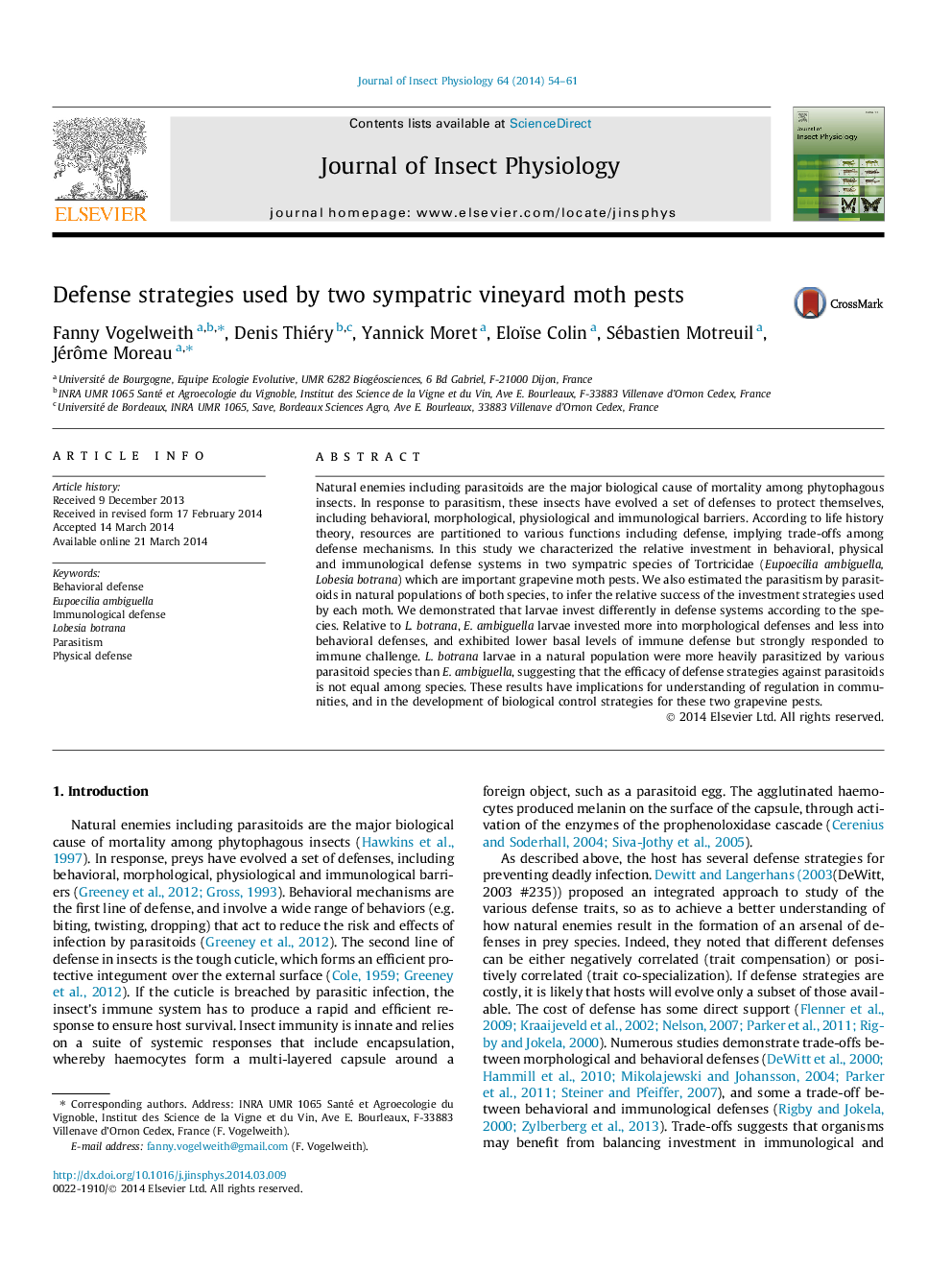| Article ID | Journal | Published Year | Pages | File Type |
|---|---|---|---|---|
| 5921637 | Journal of Insect Physiology | 2014 | 8 Pages |
â¢We compared investment in defense systems of two related species of grapevine moth.â¢E. ambiguella larvae invest more into morphological defenses.â¢L. botrana larvae invested more into behavioral defenses.â¢E. ambiguella strongly responded to immune challenge contrary to L. botrana.â¢L. botrana larvae were more parasitized by various parasitoid species.
Natural enemies including parasitoids are the major biological cause of mortality among phytophagous insects. In response to parasitism, these insects have evolved a set of defenses to protect themselves, including behavioral, morphological, physiological and immunological barriers. According to life history theory, resources are partitioned to various functions including defense, implying trade-offs among defense mechanisms. In this study we characterized the relative investment in behavioral, physical and immunological defense systems in two sympatric species of Tortricidae (Eupoecilia ambiguella, Lobesia botrana) which are important grapevine moth pests. We also estimated the parasitism by parasitoids in natural populations of both species, to infer the relative success of the investment strategies used by each moth. We demonstrated that larvae invest differently in defense systems according to the species. Relative to L. botrana, E. ambiguella larvae invested more into morphological defenses and less into behavioral defenses, and exhibited lower basal levels of immune defense but strongly responded to immune challenge. L. botrana larvae in a natural population were more heavily parasitized by various parasitoid species than E. ambiguella, suggesting that the efficacy of defense strategies against parasitoids is not equal among species. These results have implications for understanding of regulation in communities, and in the development of biological control strategies for these two grapevine pests.
Graphical abstractDownload full-size image
